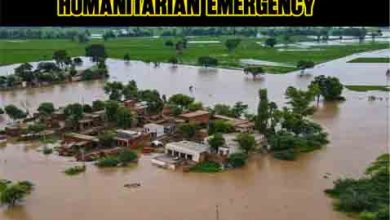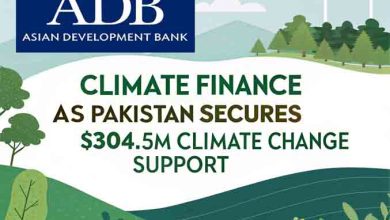Heatwave Havoc: Pakistan Must Urgently Activate Heat Action Plans to Prevent More Deaths
Heatwave havoc is sweeping Pakistan again. Authorities must implement citywide heat action plans to protect lives. Learn what must change now.
Heatwave havoc has returned to Pakistan with alarming intensity. As temperatures soar past 49°C in multiple regions, the country finds itself yet again among the hottest places on Earth. This recurring environmental crisis is no longer a seasonal nuisance—it is a life-threatening emergency demanding immediate and coordinated action.
Last year alone, more than 700 people succumbed to heat-related complications. Hospitals across Karachi, Lahore, Jacobabad, and Sukkur are already reporting cases of heatstroke in large numbers. Given the predictable recurrence and increasing severity of this phenomenon, authorities must no longer treat heatwaves as isolated anomalies, but rather as annual disasters with intensifying consequences.
Why Is Pakistan So Vulnerable to Heatwaves?
Despite contributing less than 1% of global greenhouse gas emissions, Pakistan ranks among the top 10 most vulnerable countries to climate change. Several structural and environmental issues compound the risk of heatwave havoc:
- Poor urban planning and lack of green infrastructure
- Increasing urbanization and concrete heat islands
- Erratic monsoon patterns and water shortages
- Limited access to public cooling and health facilities
- Weak early warning systems and lack of public education
Cities like Karachi and Lahore, already grappling with unregulated development, have become heat islands where heat gets trapped between asphalt roads and high-rises, dramatically increasing the perceived temperature.
Read how Lahore’s urban heat island effect worsens each year
The Fatal Cost of Inaction
Heatwaves are no longer just environmental events—they are public health disasters. Without structured and preemptive responses, the cost is paid in human lives.
In the absence of Heat Action Plans (HAPs) across Pakistan’s major cities, hospitals are overwhelmed, outdoor laborers suffer without protection, and citizens remain uninformed about preventive measures. These conditions lead to fatalities that are, in most cases, entirely preventable.
The National Disaster Management Authority (NDMA) has issued repeated warnings over the last five years, yet their guidelines are rarely turned into action on the ground. Warnings alone are not enough; they must be followed by operational planning.
Time to Operationalize Heat Action Plans
The time to act is now. With climate extremes becoming the norm rather than the exception, Pakistan’s government must:
- Immediately operationalize Heat Action Plans in all major urban centers
- Deploy emergency cooling shelters in both urban slums and rural areas
- Use real-time weather and health data to identify heatwave hotspots
- Adjust work hours for outdoor laborers to avoid peak heat periods
- Launch public awareness campaigns about hydration and heatstroke prevention
These steps form the core of a resilient heat management strategy, which should be part of a wider climate adaptation framework.
See how Ahmedabad, India successfully implemented a Heat Action Plan
The Role of Climate Finance
Finance Minister Muhammad Aurangzeb, during his recent budget address, called climate change an “existential threat.” Rightfully so. However, now that Pakistan has secured climate adaptation funds from the World Bank and IMF, it must ensure:
- Transparent and immediate disbursal of funds toward public heat-relief measures
- Reform-based usage, prioritizing health, urban planning, and disaster preparedness
- Inclusion of climate risk in city master plans and infrastructure design
IMF’s climate-resilience financing in Pakistan
The failure to convert international commitments into domestic protections will only make these climate funds symbolic and ineffective.
What Needs to Happen Now
To turn heatwave havoc into a manageable threat, the government and city administrations must:
- Integrate climate resilience into education and training for civil workers
- Fund green belts, urban forestry, and rooftop gardens in dense areas
- Enhance emergency healthcare systems to respond to seasonal surges
- Work with local communities and NGOs for grassroots-level implementation
Internal Link: Explore Pakistan’s Youth-Led Climate Adaptation in Gilgit-Baltistan
The focus must shift from reaction to prevention. With adequate planning, even cities like Jacobabad—which often record some of the world’s highest temperatures—can reduce mortality and increase resilience.
Conclusion: Turning Finance into Relief
Pakistan is standing at a critical climate crossroads. The current wave of heatwave havoc is a dire reminder of what inaction costs. Hundreds of lives are lost each summer, and countless more are debilitated by illnesses that should never have occurred in the first place.
Now that the government has secured much-needed climate adaptation funding, it must move from acknowledgment to action. Heat Action Plans should no longer be optional—they must become mandatory tools of urban and rural survival. Climate change is not waiting. Neither should we.







